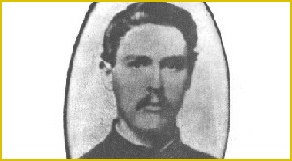












Last Gasps
Paranormal



The South’s science-based team!
Our trained investigators are here to believe you. Most importantly, we are here to solve the problem...no matter what it takes. Our services are always FREE.

© 2023 Last Gasps paranormal. Links | Terms and Conditions







Kennesaw
House
Marietta, GA


Often called the “House of 1000” ghosts thanks to a television “psychic,” the Kennesaw House remains one of the only houses in north Georgia to survive both the ravages of time and the hated General Sherman.
Written by Kyle T. Cobb, Jr.
Nos tibi credere.
Haunted Places
History
The village that became Marietta traces its origins to an illegal settlement of a small cluster of homes near the Cherokee town of Kennesaw in 1824. In 1832, the state of Georgia authorized settlement from the lands newly acquired from the Cherokee and the town of Marietta was recognized on 19 December 1834 using a plat laid out by James Anderson. While the new county was named after Thomas Willis Cobb (a US representative, Senator and Supreme Court Judge), Marietta was named after Cobb's wife Mary.
The Kennesaw House was built in 1845 by John Glover as a cotton warehouse. With the completion of the Western & Atlantic Roadroad, Glover converted a portion into a restaurant to serve the train depot next to the building
In 1855, Dix Fletcher bought the building and renovated it into the Fletcher House Hotel.
The Great Train chase
James Andrews, a civilian working with the Union Army, made his way down to Marietta along with disguised Union soldiers in April 1862. On the night of April 11, Andrews and some of the men spent the night at the Fletcher House. A historic reproduction of what the room may have looked like has been re-created at the Marietta Museum of History, in the room that the men supposedly slept in. The men, along with their leader James Andrews boarded the train on April 12 with the rest of the passengers.
A hospital and Morgue
The Kennesaw House was one of the only buildings in Marietta not burned to the ground during William Tecumseh Sherman's Atlanta Campaign, partly because Fletcher was a Mason, and his son-in-law was a Union spy. The building, like many others on the Marietta square was converted to a war hospital for the confederate army. Many wounded shoulders were transported to Marietta after the battle of Antietam which was the bloodiest battle in Georgia.
On 3 July 1864, Marietta was captured by Union forces and briefly the Kennesaw House served as the hated General William T. Sherman's headquarters.
When Union forces marched out of Marietta to Atlanta, the Kennesaw house was 1 of 5 buildings in the area left standing. Incorrect reports say that the Kennesaw was spared from Union burning because of Fletcher was a Unionists or because he was a mason or because his son-in-law (Henry Cole) was a Union spy. The truth is in November 1864 the building was ordered to be burned but before the fire was set the order was countermanded.
Sparks from the surrounding buildings set the roof of the building on fire. Luckily the fire failed to consume the building. The fourth floor and the outer balcony were destroyed.
After the war
In 1867, the hotel reopened as a 3 story building and Fletcher renamed the hotel the Kennesaw House.
In 1898, the United Daughters of the Confederacy organized and met in the Kennesaw House.
In 1920, the first floor was renovated and converted to retail shops while the rest of the building was renamed as the Marietta Hotel.
In 1979, the entire building was renovated. The renovation included removing the white facade from the building and exposing the brick again along with completely demolishing the interior. The few original parts of the building are the wooden staircases and some of the fireplaces. The 1979 renovation saw the top two floors were converted into offices, with the bottom being the Brickworks restaurant.
Finally, in 1996, the Marietta Museum of History assumed occupancy of the second floor then took over the third floor after the Junior League and Southern Baseball Federation left. The second floor features the Museum's exhibits and Museum Store along with some staff offices. The third floor contains the collections storage and the rest of the staff offices. The recent acquisition of the first floor has allowed the Museum to create a new community and event space with the future having the Museum Store and staff offices being relocated to the first floor as well.
Paranormal
The Kennesaw house has been called the house of 1000 ghosts by various television shows that claim the building is haunted. Stories of the building being haunted extend back to the 1980s.
Most of the paranormal claims relate to hospital era and the number of deaths that occurred.
The most spectacular event related to the Kennesaw House was during a live broadcast in the early 1980s after the building had been renovated. During the broadcast an apparition allegedly moved behind a report from wall into the hallway and into another wall. (So far we have been unable to obtain a copy of the video.)
Apparitions have been allegedly been seen throughout the building. There are claims that an investigation team in the early 1980s using a security camera on the second caught clear images of the figure of a young boy standing in front of the elevator. A permanent security system in the same area has never captured a similar event in the 30-years since.
A number of visitors have also claimed to see a woman, possibly Mrs. Fletcher, in an early 1800s dress with pink trim.

Dix Fletcher

| Paranormal Books |
| Apparitions |
| Cryptids |
| Demons |
| Orbs |
| Poltergiest |
| Residual Hauntings |
| Shadow People |
| West Demons |
| Ouija and Zozo |
| Exorcisms |
| Anneliese Michel |
| Ronald Hunkeler |
| Anna Ecklund |
| LaToya Ammons |
| George Lukins |
| Christian Demon texts |
| Roman Rite 1614 |
| Roman Rite 1998 |
| Eastern Demons |
| FAQ |